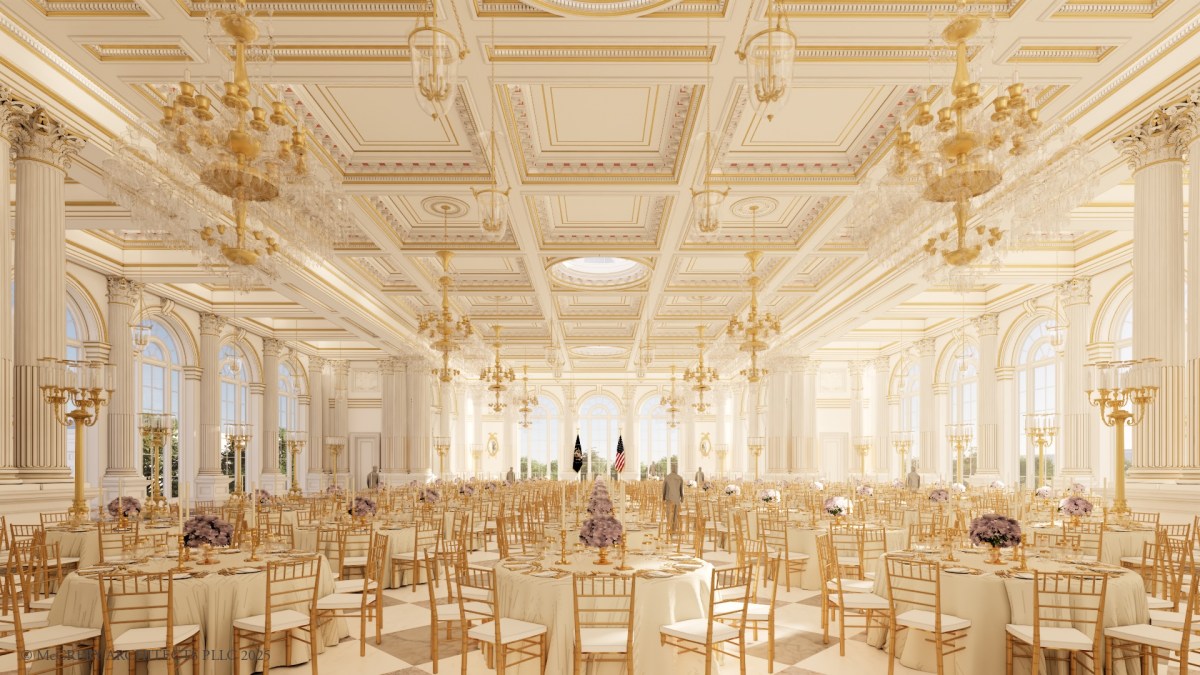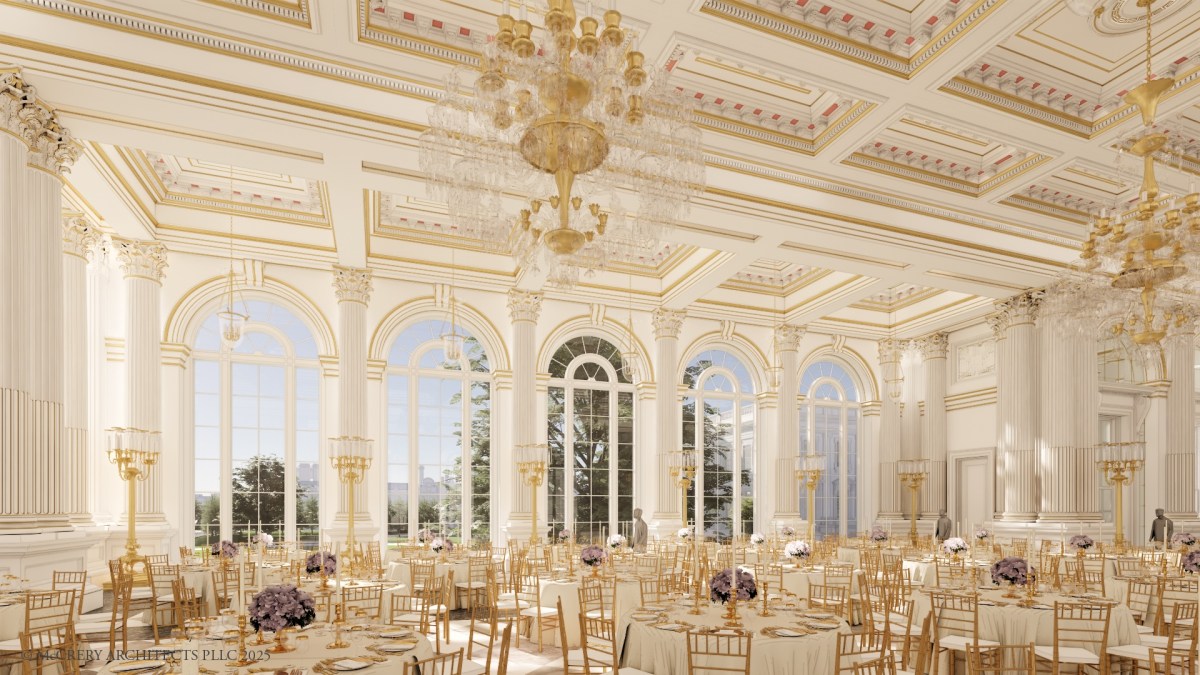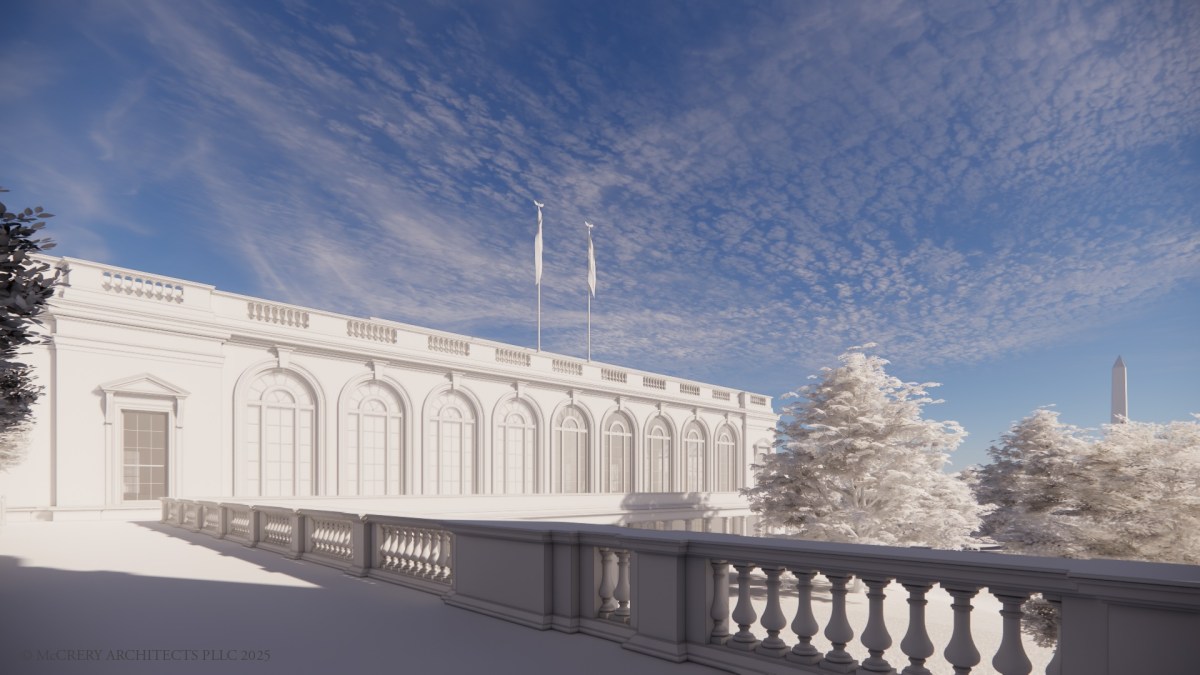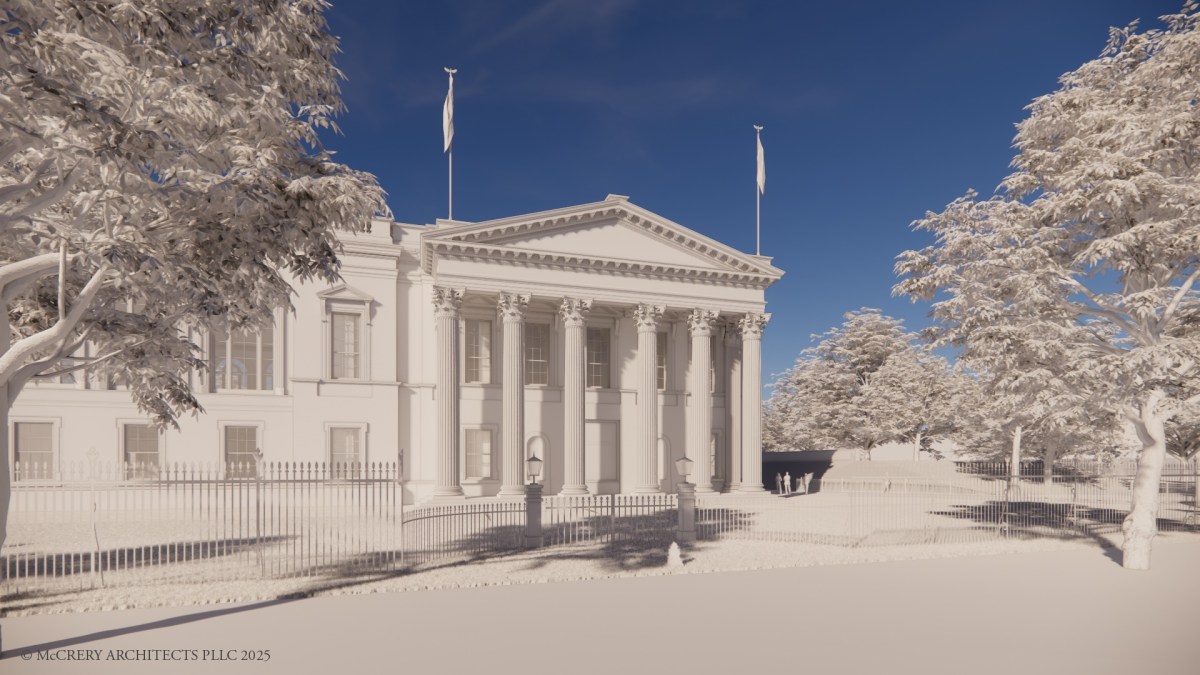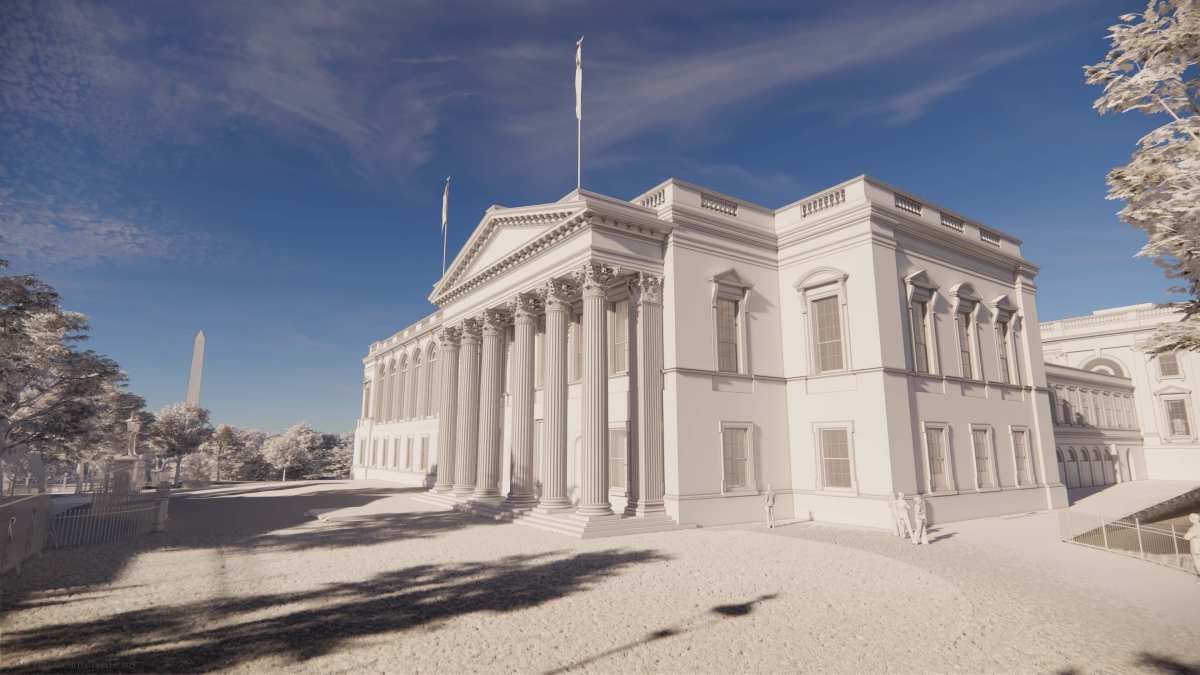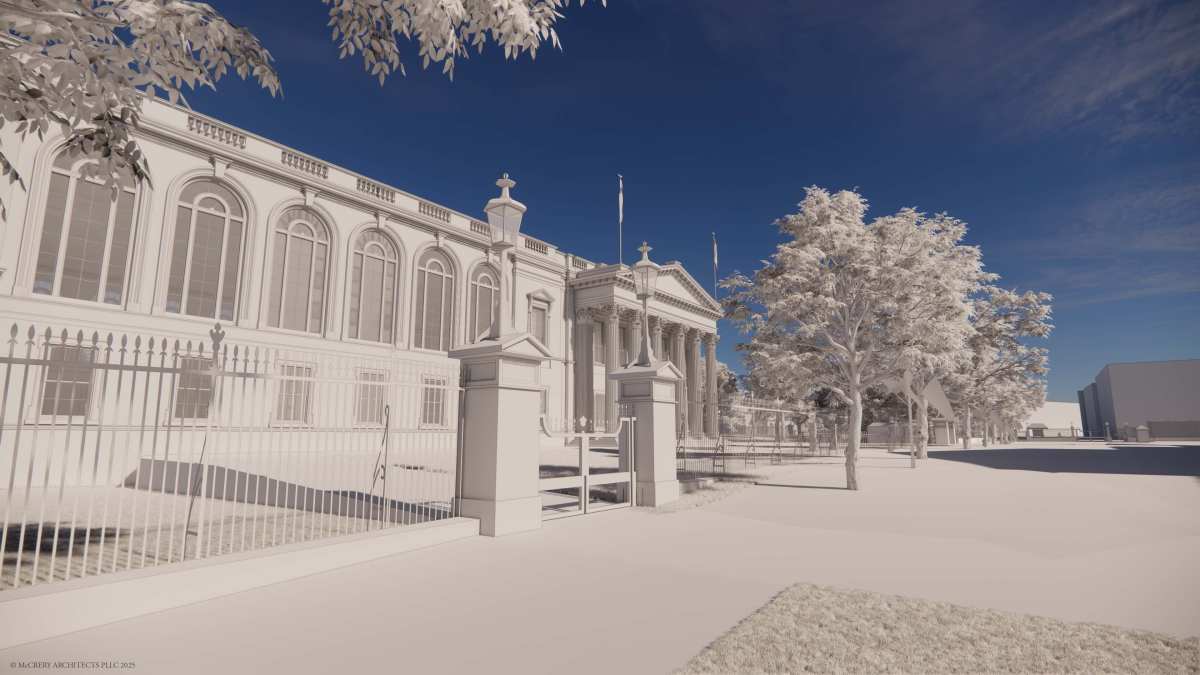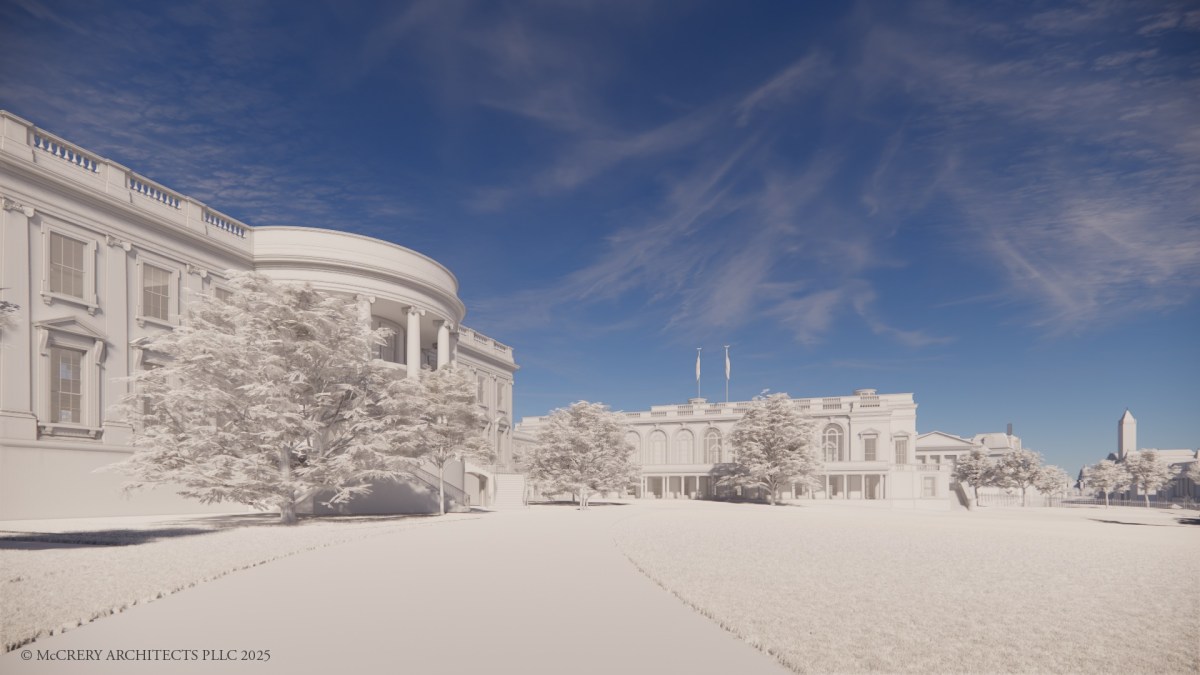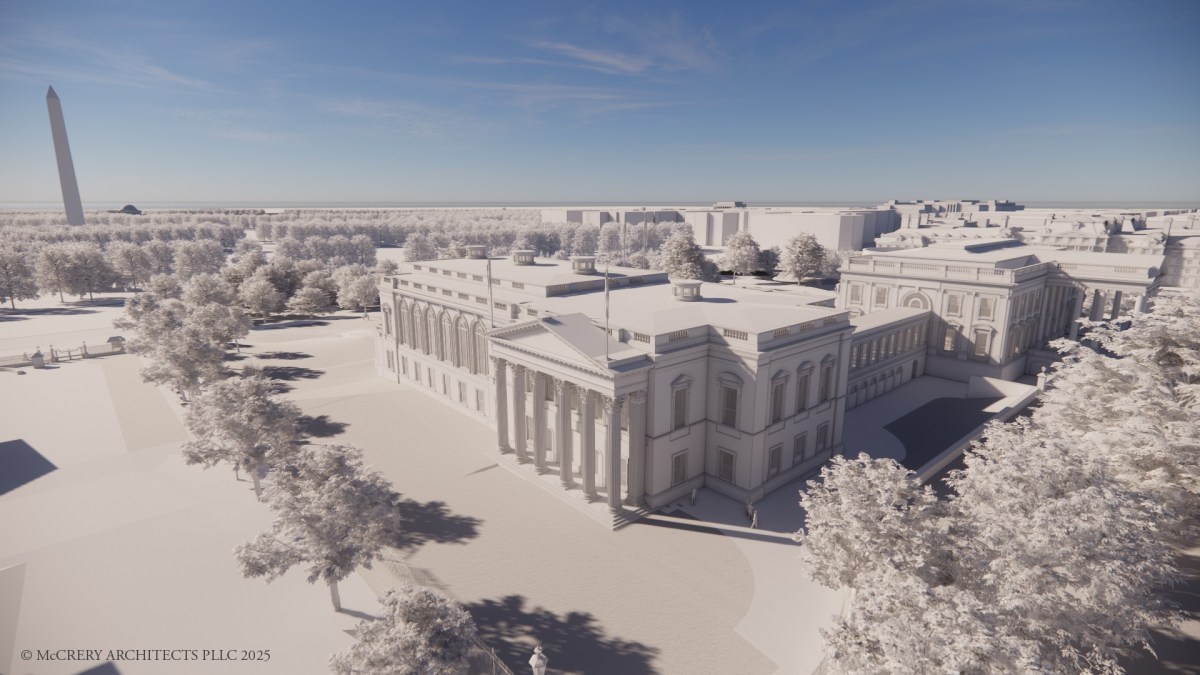East Wing Expansion Stages
View Ballroom Renderings Below
Major Events Timeline
History
Our first president, George Washington, selected the site for the White House in 1791. The following year, the cornerstone was laid and a design submitted by Irish-born architect James Hoban was chosen. After eight years of construction, President John Adams and his wife Abigail moved into the still-unfinished residence. During the War of 1812, the British set fire to the President’s House, and James Hoban was appointed to rebuild it. James Monroe moved into the building in 1817, and during his administration, the South Portico was constructed. In 1829, Andrew Jackson oversaw the addition of the North Portico. Various proposals were put forward during the late 19th century to significantly expand the President’s House or to build an entirely new residence, but these plans were never realized.
In 1902, President Theodore Roosevelt began a major renovation of the White House, including the relocation of the President’s offices from the Second Floor of the Residence to the newly constructed temporary Executive Office Building (now known as the West Wing). The Roosevelt renovation was planned and carried out by the famous New York architectural firm McKim, Mead and White. Roosevelt’s successor, President William Howard Taft, had the Oval Office constructed within an enlarged office wing.
Less than fifty years after the Roosevelt renovation, the White House was already showing signs of serious structural weakness. President Harry S. Truman began a renovation of the building in which everything but the outer walls was dismantled. The reconstruction was overseen by architect Lorenzo Winslow, and in 1952, the Truman family moved back into the White House.
Every president since John Adams has occupied the White House, and the history of this building extends far beyond the construction of its walls. From the Ground Floor Corridor rooms, transformed from their early use as service areas, to the State Floor rooms, where countless leaders and dignitaries have been entertained, the White House is both the home of the President of the United States and his family, and a living museum of American history. The White House remains a place where history continues to unfold.
- There are 132 rooms, 35 bathrooms, and 6 levels in the Residence. There are also 412 doors, 147 windows, 28 fireplaces, 8 staircases, and 3 elevators.
- The White House kitchen is able to serve dinner to as many as 140 guests and hors d’oeuvres to more than 1,000.
- The White House requires 570 gallons of paint to cover its outside surface.
- At various times in history, the White House has been known as the “President’s Palace,” the “President’s House,” and the “Executive Mansion.”
- President Theodore Roosevelt officially gave the White House its current name in 1901.
East Wing Expansion
For over 150 years, Presidents, administrations, and White House staff have sought a larger event space on the White House complex to accommodate more guests. President Donald J. Trump is committed to addressing this need for future administrations and the American people.
The White House, among the world’s most beautiful and historic structures, cannot currently host major events for world leaders without erecting a large, unsightly tent 100 yards from the main entrance. The White House State Ballroom will add approximately 90,000 square feet of ornate, meticulously crafted space, with a seated capacity of 650—more than tripling the East Room’s 200-person limit.
President Trump has convened meetings with White House staff, the National Park Service, the White House Military Office, and the United States Secret Service to review design and planning.
He has selected McCrery Architects as lead firm, renowned for classical design and based in Washington, D.C. CEO Jim McCrery said: “Presidents in the modern era have faced challenges hosting major events at the White House because it has been untouched since President Harry Truman. I am honored that President Trump has entrusted me to help bring this beautiful and necessary renovation to The People’s House, while preserving the elegance of its classical design and historical importance.”
Clark Construction will lead the construction team, with AECOM overseeing engineering.
Construction commenced in September 2025 and is projected to conclude well before the end of President Trump’s term.
President Trump, and other patriot donors, have generously donated the funds for this $250 million project. The United States Secret Service will implement required security measures.
The ballroom will stand apart from the main White House but mirror its architectural theme and heritage. It will replace the East Wing, built in 1902 and extensively modified, including a 1942 second-story addition.
White House Chief of Staff Susie Wiles said the following: “President Trump is a builder at heart and has an extraordinary eye for detail. The President and the Trump White House are fully committed to working with the appropriate organizations to preserving the special history of the White House while building a beautiful ballroom that can be enjoyed by future Administrations and generations of Americans to come.”
The White House will provide ongoing public updates.


